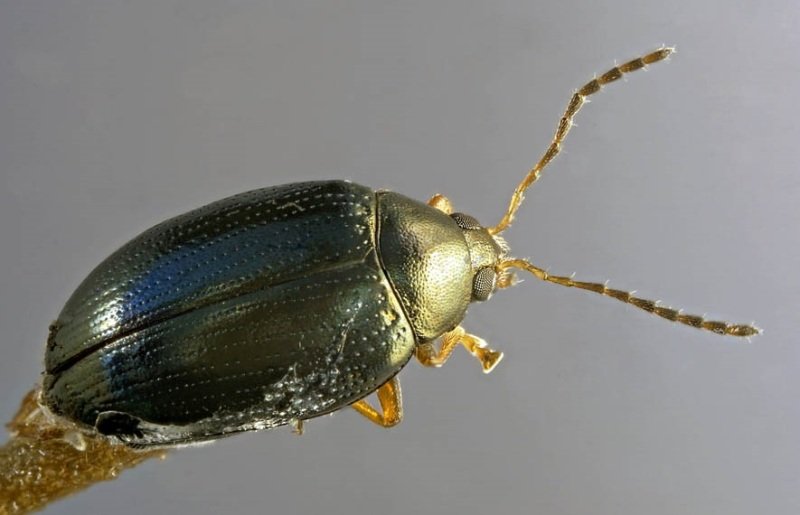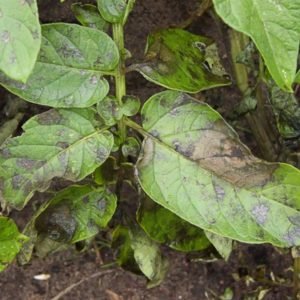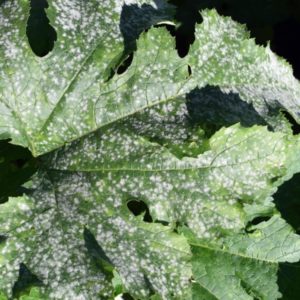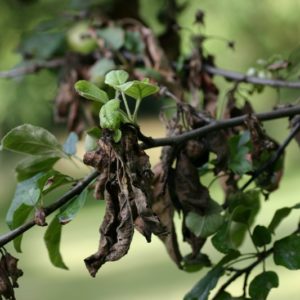This little jumping beetle is particularly eager for the leaves of the vegetable garden, which it cheerfully pierces. Find out how to recognize flea beetles and which natural treatments to use to eliminate them.
Flea beetles: beetles
Flea beetles are between 2mm and 5mm long. They are a black colored back with metallic blue reflections and the rest of the body brown, some species like Phyllotreta nemorum have a yellow stripe on the back. They have two long antennae, two hard and horny wings. Their hind legs are very developed, they allow them to jump high and have earned them the nickname “land fleas”. The larvae are nested underground, they are the adult insects that we observe on the leaves. When disturbed, they drop to the ground. There are several species of flea beetles: cruciferous flea beetles, corn, potatoes, vines, etc.
The life cycle of flea beetles

After a winter spent underground or hidden under a pile of leaves, the flea beetles come out of their hibernation in May. Depending on the species, they begin to nibble the leaves of their favorite plants. The females lay eggs at the foot of the seedlings to provide food for their offspring. This spawning takes place in the spring, but the females also lay underground before winter. The larvae will then enjoy the roots of the young seedlings. They also penetrate plants and dig galleries. The larvae which hatched in autumn can even spend the winter in the heart of the plant and emerge in the spring to pupate underground. A female flea beetle can lay up to 1000 eggs… Enough to devastate many crops!
Affected plants and damage
flea beetle vegetable garden depending on the species, flea beetles attack crucifers (cabbage, turnip, arugula, etc.), nightshades (tomatoes, eggplants, potatoes, etc.) or even vines. The leaves of these plants are then riddled with small holes, rather circular. Most of the time, they nibble on the young leaves, which are more tender for their taste. You must therefore pay particular attention to the seedlings so as not to compromise all your efforts. Adepts of dry and hot environments, they continue their task until frost.
Preventive control techniques

Culture associations
how to fight flea beetlesCertain plants would keep these pests away from the vegetable patch. This is the case of mustard and Chinese cabbage which create a diversion by attracting flea beetles. Conversely, tansy, red fescue or white clover would have the effect of repelling them. They should therefore be placed near plants subject to flea beetle attacks.
Mulching
A layer of mulch has several roles: to conserve humidity, limit the growth of weeds, protect from the cold in winter and from the heat in summer. By keeping the soil cool, mulching will limit the colonization of the soil by flea beetles.
Anti-insect veil
Surely one of the most effective techniques. Automatically install an insect veil on sensitive species. It will also allow you to fight against other pests which would have a bad idea to take a turn on the side of your vegetable garden.
Natural treatments

Watering
natural flea beetle treatment once the flea beetles have been spotted, they must then be scared away. These insects fear humidity, so bet on a good cold shower. Then water the whole plant, at the level of the foliage but also on the ground. Prefer the morning, so that the water evaporates well with the heat of the day and does not induce diseases. However, avoid watering tomatoes which can cause late blight.
Purins
Even if it means watering, you might as well spray liquid manure which also has the advantage of strengthening the plants. You can then choose tansy or nettle, leaving a few days intervals between two sprays.
Repellent decoctions
The garlic decoctions or chili have a repellent effect! Don’t hesitate to spray it all over the plant, it’s worth a try.
Glue strips
Some gardeners use glue strips to capture adult insects. It might not be a stand-alone solution, but it will always be a few fewer flea beetles!
Biological insecticide
If you still can’t get rid of the flea beetles, use a pyrethrum-based insecticide. Authorized in organic farming, this treatment respects the soil. However, use it only if other treatments have not worked. Indeed, an insecticide, whether natural or not, does not differentiate between pests and auxiliaries.




